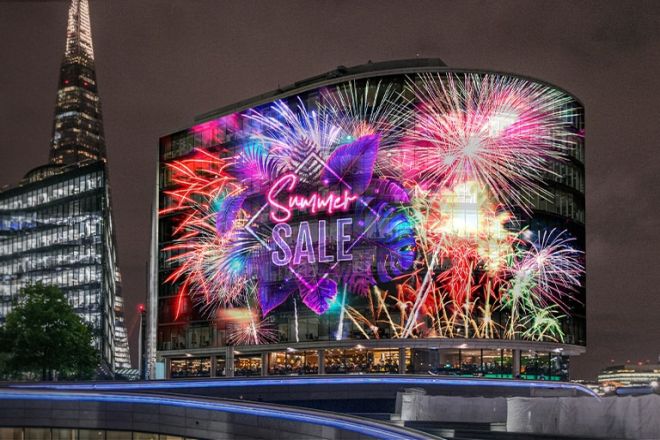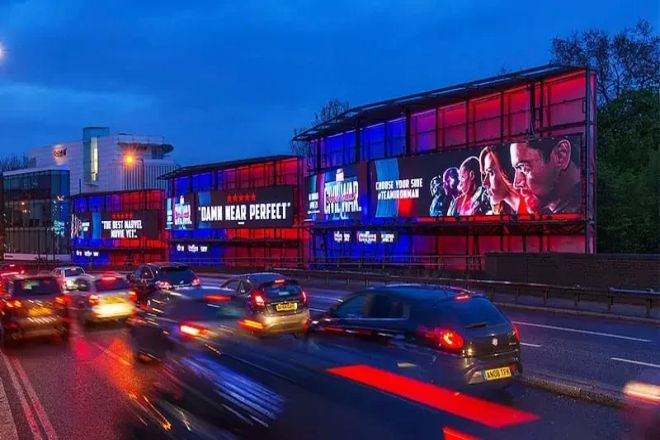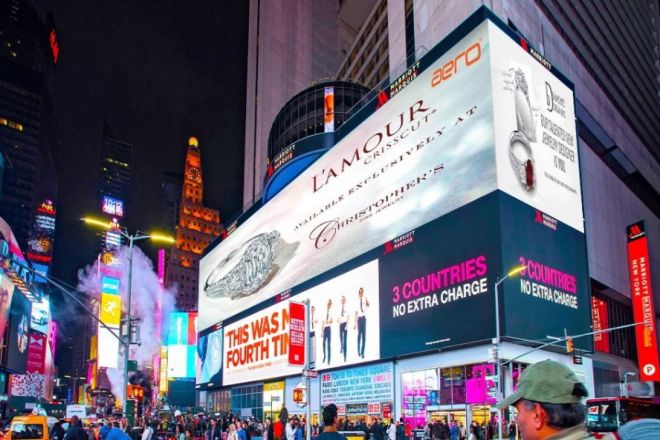مقدمة

في العصر الرقمي، عرض الصمام screens, as an efficient and flexible visual communication medium, have been widely used in many fields, such as urban landscapes, commercial advertising, information announcements, and sports events. They are not only an important carrier of information transmission but also an intuitive display of urban culture and commercial vitality.
With the continuous advancement of technology and the increasingly mature market, the resolution, brightness, color reproduction, and other performance indicators of LED displays have been significantly improved, providing a broader space for its application in various fields.
However, in the face of fierce market competition and the increasingly critical eyes of the audience, how to ensure that the exposure rate of LED displays is maximized has become a common focus for advertisers, operators, and content creators.
The level of exposure is directly related to the breadth and depth of information transmission, affecting the shaping of brand image and the improvement of market share. Therefore, it is of extremely important practical significance and strategic value to explore and practice a series of effective strategies to maximize the exposure of LED displays.
1. What is the exposure rate of LED display?
The exposure rate of the LED display screen can be understood as the frequency or degree to which the information displayed on the LED display screen is seen by the target audience and creates an impression. This is a relatively subjective concept that is difficult to quantify directly, but it can be indirectly evaluated and improved through a series of objective factors.
It usually refers to how many people see the content on the LED display within a specific period of time, and how well these viewers remember or impress the content. It is affected by many factors, including the location, size, resolution, content quality, playback period, and technical maintenance of the display.
2. Understand the key factors of LED display exposure rate

When discussing how to maximize the exposure of LED displays, it is crucial to have a deep understanding of the key factors behind them. Here is a detailed analysis of these key factors:
- اختيار الموقع
The location of the LED display is the primary determinant of its exposure. Different areas have a significant impact on the exposure effect due to their different traffic flow, target audience groups, and environmental atmosphere.
For example, commercial centers often become the first choice for advertisers because of their bustling commercial activities and dense passenger flow, and they can quickly attract a large amount of attention. Transportation hubs, such as airports, train stations, subway stations, etc., are areas with a concentrated flow of people and high mobility, which are suitable for displaying information with wide impact.
High-traffic areas such as pedestrian streets and parks are suitable for content display related to leisure and entertainment. Therefore, when selecting the location of the LED display, it is necessary to fully consider the location characteristics to ensure that the information can accurately reach the target audience.
- Screen size and resolution
Screen size and resolution are key factors that affect the audience’s visual experience and information readability. Large screens can provide wider display space, attract the attention of viewers from a greater distance, and enhance the visual impact.
High resolution can ensure clear and detailed images and text, reduce blur and jagged phenomena, and improve the readability and credibility of information.
Therefore, when planning an LED display screen, the appropriate screen size and resolution should be selected based on actual needs and scene characteristics to achieve the best visual effects and information transmission effects.
- Content creativity
Creative content is one of the core elements that improve the exposure of LED displays. In the era of information explosion, only unique, interesting, and attractive content can attract the audience’s attention and extend their stay.
Creative content can include dynamic images, video clips, interactive games, and other forms to stimulate the audience’s interest and curiosity through multi-sensory stimulation such as vision, hearing, and even touch.
At the same time, the content needs to be closely related to the brand image, product features, or promotional themes to ensure effective communication of information and enhancement of the brand image.
- Play period
The choice of playback period is equally important to the exposure effect of the LED display. The traffic characteristics and the psychological state of the audience are different in different time periods, so it is necessary to choose the appropriate broadcast period according to the actual situation.
For example, the morning and evening peak hours are the times when people flow the most, which is suitable for displaying advertisements or information with broad appeal; while during holidays, people are often in a happy mood and have plenty of time, which is more suitable for displaying content related to leisure and entertainment.
In addition, it is necessary to consider the impact of weather, season, and other factors on the audience’s travel and viewing habits in order to better arrange broadcast periods.
- Technical maintenance and updates
Technical maintenance and updates are important guarantees for maintaining the best condition of LED displays. Regular maintenance can ensure the normal operation of the display and extend its service life, while software upgrades can introduce new functions and optimize display effects, improving the audience’s viewing experience.
In addition, with the continuous advancement of technology and the continuous development of the market, the performance and functions of LED displays are also constantly improving. Therefore, timely follow-up of technological developments and corresponding updates and upgrades are the key to maintaining the competitiveness of displays.
3. Strategies to maximize LED display exposure
In a highly competitive media environment, maximizing the exposure of LED displays is crucial for advertisers, operators, and content creators. The following is a series of strategies designed to increase the exposure of LED displays:
1). Accurate positioning and optimized layout
In-depth study of the target audience: Through market research and data analysis, understand the activity trajectory, interests, and consumption habits of the target audience and provide a scientific basis for the installation location of the display screen.
Choose the best installation location: Based on the activity scope of the target audience, choose locations with high flow of people and high exposure, such as commercial centers, transportation hubs, tourist attractions, etc.
Consider the degree of environmental integration: ensure the harmony between the display and the surrounding environment, avoid obtrusiveness, improve visual aesthetics, and make the audience more willing to stop and watch.
2). Content is king; creativity wins.
Design attractive content: Combine video, animation, graphics, and other forms to create creative and visually impactful content that attracts the audience’s attention.
Regularly update the content: Keep the content fresh and timely, and keep up with current hot topics, festival celebrations, etc., so that the audience can make new discoveries every time they watch.
Personalized push: Use big data analysis technology to realize a personalized push of content based on the audience’s preferences and behavioral habits, thereby increasing the audience’s attention and participation.
3). Intelligent scheduling, efficient playback
Introducing an intelligent playback system: The intelligent system monitors weather, traffic, and other data in real-time and automatically adjusts the playback strategy to ensure that content is displayed at the best time.
Set a priority playlist: Set a priority playlist based on the importance and timeliness of the content to ensure that important information can be displayed first and improve the efficiency of information transmission.
Multi-screen linkage technology: Use multi-screen linkage technology to connect multiple displays to achieve synchronous playback and interaction of content, expand coverage, and enhance communication effects.
4). An interactive experience to enhance participation
Develop interactive functions: Add functions such as QR code scanning and touch interaction on the display screen to allow the audience to transform from passively accepting information to actively participating in interactions, thereby increasing audience participation and stickiness.
Online and offline linkage activities: Combine online and offline activities, use LED display screens as event promotion platforms, attract more audience attention and participation, and enhance the visibility and influence of the event.
5). Cross-border cooperation and resource sharing
Establish cooperative relationships: Actively seek cooperation opportunities with other media, brands, or institutions, and expand exposure channels and audience scope through resource sharing and complementary advantages.
Participate in public activities: Actively participate in urban cultural activities, sports events, and other public activities, use LED displays for publicity and promotion, and enhance brand image and popularity. At the same time, this is also an excellent opportunity to showcase the strength and creativity of the company.
4. Challenges faced and countermeasures

In the pursuit of maximizing the exposure of LED displays, a series of challenges will inevitably be encountered. In response to these challenges, we need to take effective countermeasures to ensure that LED displays can continue to play an important role in information dissemination and brand promotion.
1) التحديات التي تواجهها
- Technology updates quickly:
With the rapid development of science and technology, LED display technology is also constantly updated and iterated. The emergence of new technologies is often accompanied by higher performance requirements and greater investment costs.
For operators, how to keep up with the pace of technological updates and remain competitive is a major challenge.
- High-cost investment:
The purchase, installation, maintenance, and content production of LED displays all require large cost investments. For small and medium-sized enterprises or operators with limited budgets, how to achieve the best exposure effect while controlling costs is a problem that needs to be solved.
- Audience distraction:
In the era of information explosion, it is increasingly difficult for audiences to focus their attention. How to stand out among the numerous pieces of information and attract and retain the audience’s attention has become a major problem for LED display operations.
2). Responses
- تعزيز الابتكار التكنولوجي:
Continue to pay attention to industry trends and technology development trends, strengthen cooperation with scientific research institutions and technology providers, introduce and apply new technologies and materials, and improve the performance and stability of LED displays.
Innovate display technology and content presentation methods, such as introducing advanced technologies such as AR and VR, to enhance audience immersion and interactivity and enhance attraction.
- Optimize cost control:
Plan the budget reasonably, be careful, and try to reduce procurement, installation, and maintenance costs as much as possible while ensuring quality.
Explore new business models and profit methods, such as sharing revenue with advertisers, carrying out cross-sector cooperation, etc., to increase revenue sources and share costs.
- Improve content quality:
Increase investment in content creation and hire professional teams or agencies to produce high-quality, creative content.
Deeply understand the needs and preferences of the target audience, achieve personalized and accurate push of content, and increase audience attention and participation.
Introduce data analysis tools to monitor and evaluate the display effect of content in real-time and continuously optimize content strategies based on feedback results.
- Continuous learning and improvement:
Establish a learning organization to encourage team members to continuously learn new knowledge and skills to improve the overall operational level.
Regularly evaluate operational effects, summarize experiences and lessons, continuously optimize operational strategies and management processes, and improve operational efficiency and quality.
خاتمة
To sum up, maximizing the exposure of LED displays is a systematic project that requires the comprehensive use of multiple strategies and methods from multiple aspects, such as location selection, content creativity, intelligent scheduling, interactive experience, and cross-border cooperation.
With the continuous advancement of technology and the continuous development of the market, the application scenarios of LED displays will become more extensive, and the increase in their exposure will also face more new challenges and opportunities.
وأخيرًا، إذا كنت تريد معرفة المزيد من المعلومات حول شاشات LED، يرجى الحصول على اتصال معنا.
